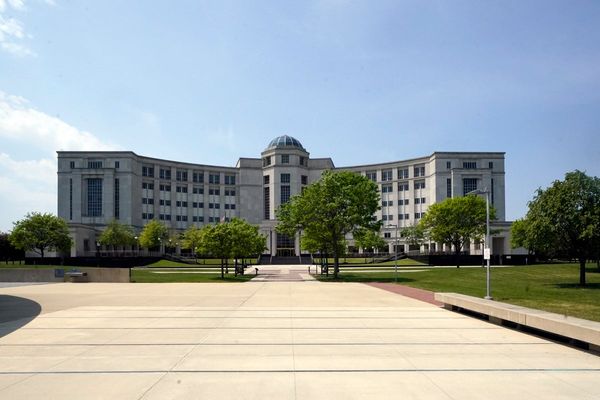The Defence Minister Richard Marles says Australia and India have been drawn together because both countries are wrestling with the "difficult problem" of how to reconcile strong economic ties with China and shared anxieties over Beijing's growing military might.
Mr Marles has met his Indian counterpart Rajnath Singh in New Delhi, with both ministers vowing to further expand military ties and intensify cooperation on defence technology.
In an interview with the ABC, the Deputy Prime Minister gave a blunt assessment of the strategic circumstances facing both India and Australia.
"For [both] India and Australia, China is our largest trading partner. And for India and Australia, China is our biggest security anxiety.
"We are both trying to reconcile those things which is not an easy problem to solve. This is the time to be comparing notes with friends."
Australia has significantly ramped up defence cooperation and joint military exercises with India over the last decade.
Seeking to expand military engagement and intelligence sharing
The two countries are holding increasingly sophisticated bilateral naval training exercises, while Australia has recently participated in Operation Malabar — a naval exercise drawing in India, Japan and the United States – despite initial hesitancy in New Delhi.
Indian aircraft will also again participate in the Exercise Pitch Black multilateral air force exercises conducted in Australia this year.
India deployed a P-8 maritime surveillance plane to Darwin in April, while Australia sent its own P-8 to India earlier this month.
Mr Marles told the ABC that he also wanted Australia and India to deepen ties to allow for greater intelligence and information sharing, while looking for new opportunities to expand training.
"All of those are good signs, but we want to continue that trajectory, and see a greater operational engagement between our two nations' defence forces" he said.
Australia urges China to 'be more transparent' about military expansion
After their meeting, Mr Marles and Mr Singh issued a joint statement saying they welcomed the "growing diversity and frequency of defence exercise and exchanges" between India and Australia, and vowing to give a "fillip" to a working group designed to boost ties within the defence industries in both countries.
Mr Marles also used a speech at the National Defence College in New Delhi to again urge China to be more transparent about its sweeping military expansion.
"China's military build-up is now the largest and most ambitious we have seen by any country since the end of the Second World War" he said.
Indian and Chinese troops fought a series of violent border skirmishes in 2020 and 2021, and the Defence Minister said Beijing's incursion into disputed territory in the high Himalayas highlighted the risk of China fuelling "insecurity" and a regional arms race.
"India's own experience illustrates this maxim more than most. The assault on Indian forces along the Line of Actual Control in 2020 was a warning we should all heed. Australia stood up for India's sovereignty then and continues to do so now," he said.
Reciprocal access logical next step
And Mr Marles briefly suggested that Australia and India should try to strike new agreements which would allow military planes and ships from both countries to regularly access and use each other's defence facilities.
"As we continue to lift our defence and security cooperation, exploring longer-term reciprocal access arrangements is the logical next step," he told the College.
Dr Ian Hall from the Griffith Asia Institute said it made sense for India and Australia to test the idea.
"We have a common problem, we have proved we can work together to address it, and we have interoperable systems in the P-8s.
"So there is no real reason not to find ways to work together as effectively as possible."







